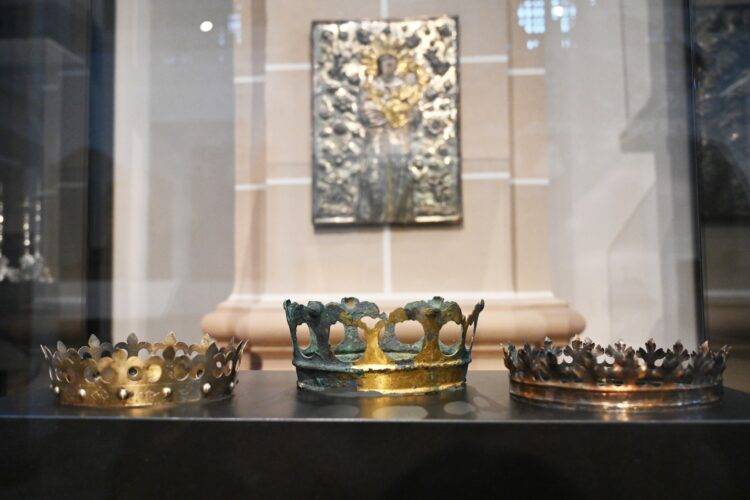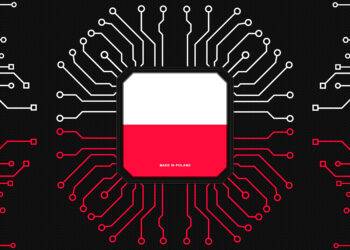A remarkable discovery has been made in the depths of Vilnius Cathedral: a secret compartment containing the burial insignia of Polish and Lithuanian royalty. Among the artifacts are the regalia of King Alexander Jagiellon, as well as those belonging to Elisabeth of Austria and Barbara Radziwiłł, both wives of Sigismund Augustus.
A Discovery Beneath the Cathedral
The find was made by a team of researchers conducting an extensive examination of the cathedral’s underground chambers. Vilnius Cathedral, a historic and religious landmark in Lithuania, has long been known as the burial site of prominent rulers. However, the existence of a hidden chamber within the crypt was unknown until now.
The insignia, which include royal symbols of power such as crowns, scepters, and orbs, were placed alongside the remains of the monarchs in accordance with medieval burial customs. Experts believe that these valuable artifacts were hidden away to protect them from looters or destruction during historical conflicts.
“We were completely taken aback by the discovery,” said one of the lead archaeologists involved in the research. “Finding such well-preserved insignia from Polish and Lithuanian royalty is a rare and significant event.”
Hidden in 1939
The royal burial insignia were hidden in 1939, shortly after the outbreak of World War II, when there was a risk that Vilnius Cathedral would be closed. Concerned about their preservation, individuals—possibly church officials or historians—concealed the artifacts to protect them from potential confiscation or destruction during the war.
After Lithuania regained independence, several attempts were made to locate the hidden treasures. The secret compartment was finally discovered and opened on December 16 of last year.
Who Were the Royals?
The items recovered belonged to three key figures in Polish and Lithuanian history. Alexander Jagiellon (1461–1506) was the Grand Duke of Lithuania and later became the King of Poland. As a member of the influential Jagiellonian dynasty, he played a crucial role in maintaining the Polish-Lithuanian union. His death at a relatively young age led to his burial in Vilnius Cathedral, where his remains have rested for over five centuries.
The other insignia were associated with Elisabeth of Austria, the first wife of Sigismund Augustus, and Barbara Radziwiłł, his second wife. Elisabeth, a Habsburg princess, was briefly Queen of Poland and Grand Duchess of Lithuania before her early death in 1545. Barbara Radziwiłł, on the other hand, remains one of the most famous figures in Polish history due to her controversial marriage to Sigismund Augustus. Despite opposition from the Polish nobility, their love story remains legendary. Barbara died in 1551 under mysterious circumstances, with rumors of poisoning lingering for centuries.
Historical and Cultural Significance
The discovery has sparked great interest among historians, archaeologists, and cultural institutions. It provides fresh insights into the burial practices of Polish and Lithuanian monarchs.
“This is an incredible opportunity to learn more about the craftsmanship of royal regalia from that period,” said a historian specializing in medieval Poland. “The insignia could reveal details about how power and monarchy were symbolized at the time.”
Next Steps for the Artifacts
Following the discovery, conservationists will undertake careful restoration work to preserve the insignia. Lithuanian and Polish cultural authorities are already in discussions about where the artifacts should be displayed. Some suggest that they should remain in Vilnius Cathedral, where they were originally buried, while others argue for a dedicated museum exhibit in Poland or Lithuania.
Public interest in the discovery is growing, with historians calling for further excavations in the cathedral’s underground chambers. There is speculation that additional treasures or historical remains may still be hidden beneath the structure.
For now, the artifacts remain under careful study, offering a fascinating glimpse into the rich and intertwined histories of Poland and Lithuania.
Support Poland 24
Poland 24 is an independent publication dedicated to providing accurate, insightful, and timely news from Poland. In an era where reliable journalism is more important than ever, we take pride in delivering content that keeps you informed about the latest developments in politics, culture, and society in Poland. However, as an independent outlet, we rely on the support of our readers to continue operating without the influence of corporate sponsors or political agendas. Your donations are crucial to help us maintain the quality of our reporting, covering both major headlines and the stories that often go untold by mainstream media.
By supporting Poland 24, you are not only helping us sustain our website, but you are also contributing to the creation of more diverse, in-depth content. Every donation, big or small, allows us to invest in better resources, hire experienced journalists, and cover a wider range of topics with the detail and attention they deserve. If you value independent journalism and want to see more high-quality content about Poland, please consider donating today. Your support truly makes a difference in our ability to continue bringing important news to the public.


















